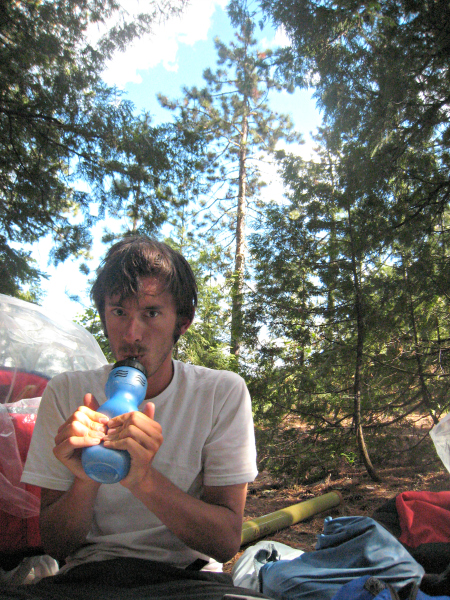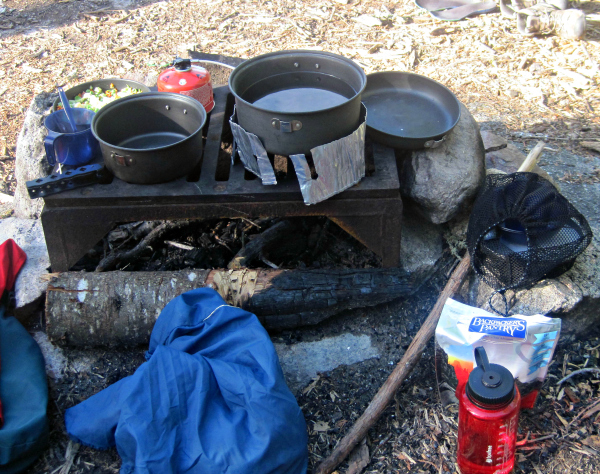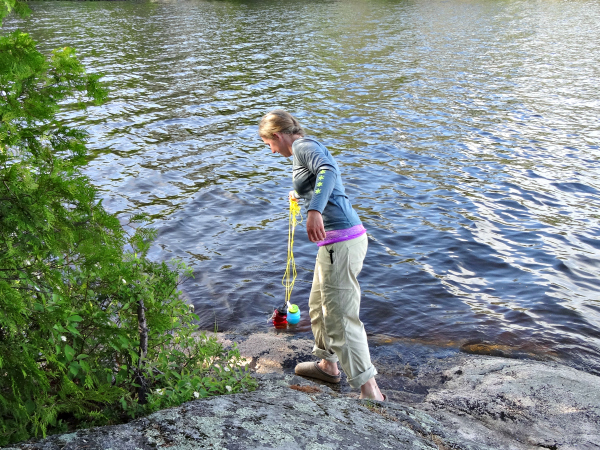The recent news story about three Isle Royale hikers being airlifted off the island after they became severely dehydrated reminded us that while campers are often hyperaware of the risks associated with getting lost, getting injured, or running into a bear, they often forget about the risks associated with not drinking enough water. But perhaps the most dangerous thing you can do while camping in the wilderness is letting yourself get dehydrated.
As our society becomes increasingly urbanized, we’ve become more fearful of a lot of things in the woods and waterborne illnesses rank pretty high on many people’s lists of Boundary Waters anxieties. However, waterborne illnesses are extremely rare in northern Minnesota and while no one wants to get giardia, it takes many days before giardia becomes symptomatic, so you probably won’t even know you have it until you get home. Obviously, you should avoid contracting giardia at all costs, but the point is that it’s not going to cause an emergency while you’re in the middle of the woods.
On the other hand, dehydration has a lot of unfortunate side effects that can put a powerful and immediate damper on your trip. The irritability and splitting headache that come with dehydration are just the tip of the iceberg when it comes dehydration’s unpleasantness. Let’s say you get dehydrated and you start losing some cognitive function. As a result, you might find yourself lost or having trouble making basic decisions. Or your motor skills start to suffer in your dehydrated state and you slip on a portage and end up with a twisted ankle . . . or worse. If left untreated, dehydration can lead to dizziness, cramps, fever, and loss of consciousness.

It might seem like an oxymoron to become dehydrated in a wilderness area that literally has “water” in its name, but we see it all the time. People come back from their canoe trips and they just seem a little . . . off. They’re confused and have trouble focusing and articulating. Sometimes they can barely make it up the outfitting building steps to collect their car keys. Get a bottle or two of cold water in them and they snap right back to life.
It’s kind of crazy that people spend their time in the Boundary Waters with “water, water everywhere and every drop you can drink” not drinking water. The chances of accidentally drinking water that will make you sick in the Boundary Waters Canoe Area Wilderness are very low. The basic rule of thumb is if it looks water you wouldn’t want to drink, don’t drink it. If you can see tadpoles swimming around in scuzzy green-tinged water, that is not what you should be drinking. But water taken from the middle of the lake where it’s getting sterilized by the sun’s ultraviolet rays all day, every day, is pure, delicious, and perfectly safe. Just dip your water bottle in and have a drink whenever you’re thirsty.
Still, we hear a lot of reasons why people don’t drink enough water on their canoe trips.
Reason #1: The filter took too long.
If the pump-style water filters are driving you crazy (it can take about 2+ minutes to fill a single Nalgene bottle) consider switching to a gravity filter, which is a great hands-free way to filter a large amount of water.
Or use the “poor man’s” water method. At the end of each day, fill your largest cooking pot with water. Bring the water to a rolling boil and sustain the boil for 1 minute. Cover the pot and let it cool overnight. The next morning you’ll wake up to cool, sterile water to fill your water bottles with.
Perhaps the most convenient option if you’re uncomfortable with drinking the water straight from the lake is to use a water bottle with a built-in water filter such as a LifeStraw, Katadyn, or Sawyer.

Reason #2: I don’t like the way it tastes.
It’s true, lake water just doesn’t taste like tap water. There’s a fair amount of tannins in Boundary Waters lakes that give the water a taste some people find off-putting. If you find lake water unpalatable, your best bet is to mask it with some sort of powdered beverage mix like Kool-Aid, Crystal Light, Gatorade, Tang, or lemonade. Just remember that any caffeinated beverages you consume don’t count as hydration, so don’t count your morning coffee or tea towards your daily water intake.
Reason #3: I can’t drink it because it’s not cold.
Room-temperature beverages are kind of what a Boundary Waters trip is all about and there’s not much any of us can do about it, short of hauling in ice packs or dry ice. If the lake temperatures are still pretty cold, you can use the lake as a fridge – just float your filled water bottles in the lake until cool. However, in high summer, when the surface water is around 70 degrees, this method is not super effective. If you really can’t stomach warm-ish drinking water, you may need to limit your Boundary Waters travels to spring and autumn.

Your best bet is to make drinking water something so automatic that you don’t even think about it on your canoe trip. Figure out some sort of hydration accountability system, such as making sure everyone drinks water at the end of every portage and don’t be afraid to be a “hydration bully” to your canoe trip buddies. One good rule of thumb is to have everyone pay attention to their lips. If your lips are dry, you’re on your way to dehydration and it’s time to have a sip of water, even if you don’t feel thirsty yet. In fact, the best bet is to drink enough water that you never feel truly thirsty.

